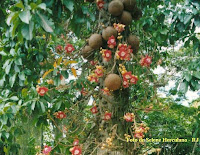















Whether it is the rain forest , mangrove in Brazil, brush, copse or orchard in England and France or the Caledonian forest and heathland of Scotland, the diversity of cover allows for a huge mixture of animals and insects to thrive and the general well being of the country can be much affected by this mix or balance. It is important to take an interest in the treatment of waste and the life cycle, as it were, of your rubbish bin as well as the rogue merchants that are cutting huge sways through the forests in Brazil. It is so clear that the main problem in Brazil is the lack of education and therefore the lack of desire to save the forest but a desire to save plastic bottles. Brazil is so lucky with its resources that its goverment are blasé about taking protective measures and caring for the natural world as they would for the farmed land, somehow the idea of sugar cane giving alchol for the use in cars gets far more attention here and even more so when its exportable, cash in hand I suppose is worth more than the forests area value.
There are a lot of sites for Brazilian trees here are a couple http://www.arvores.brasil.nom.br http://www.trees.com.br and http://www.treesforlife.org.uk for Scotland also for the States there is http://www.ces.ncsu.edu/depts/hort/consumer/factsheets/trees-new/index.html and a world site with http://www.globaltrees.org
This is a very interesting site for the trees that are now in danger.
There is one tree that brings back memories of the theatre and props, the Dracaena draco The Red Data Book of Cape Verde classifies the species as "Endangered", while it is known to be extinct in the wild on Brava and Santiago where only planted specimens exist today; it is also at severe risk of extinction on the island of S. Vicente where it is classified as Critically Endangered. The Guanche people of the Canary Islands used the sap in their mummification processes. In Ancient Rome Sangre de Drago was used as a colourant and across Europe it has been used as a varnish and anti-oxidant for iron tools.


Nenhum comentário:
Postar um comentário